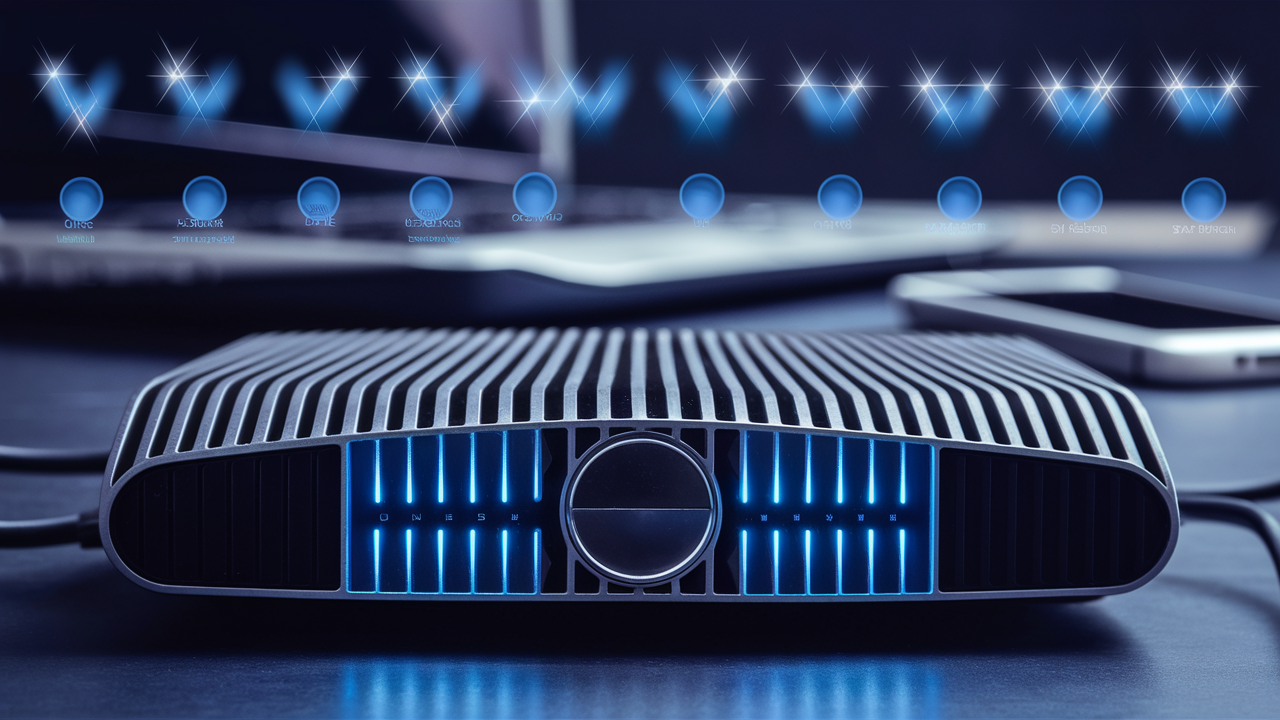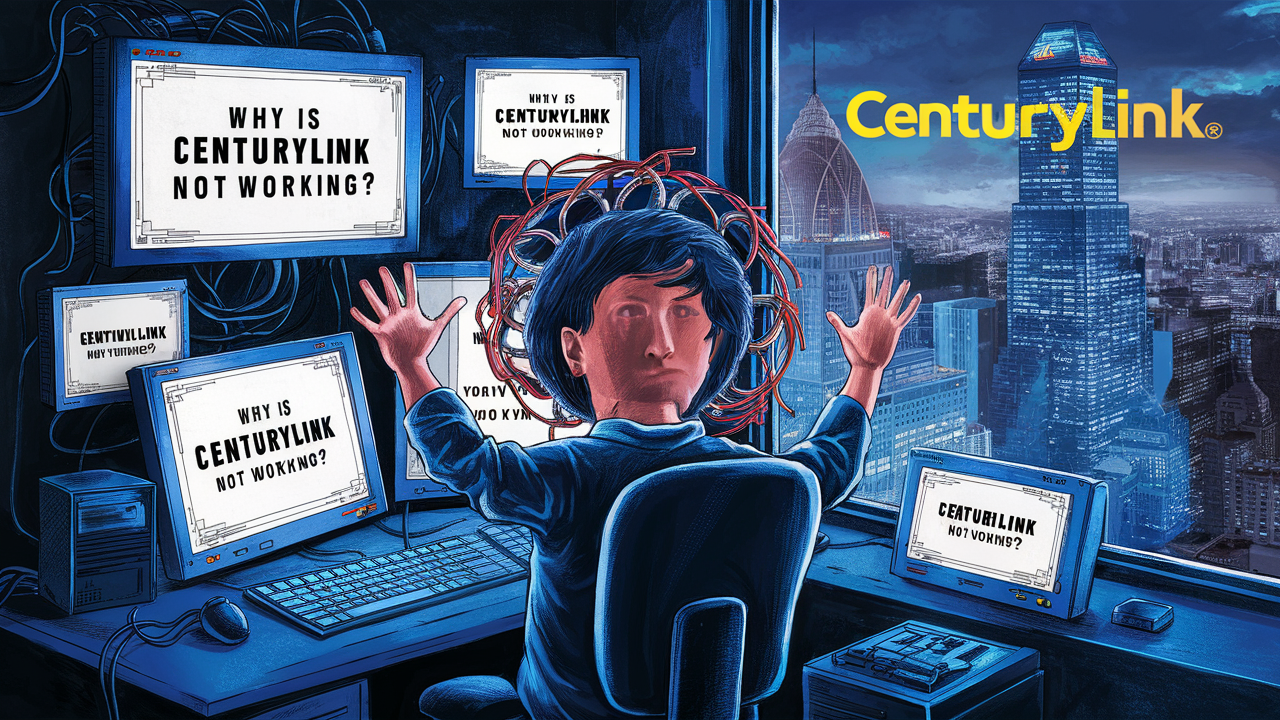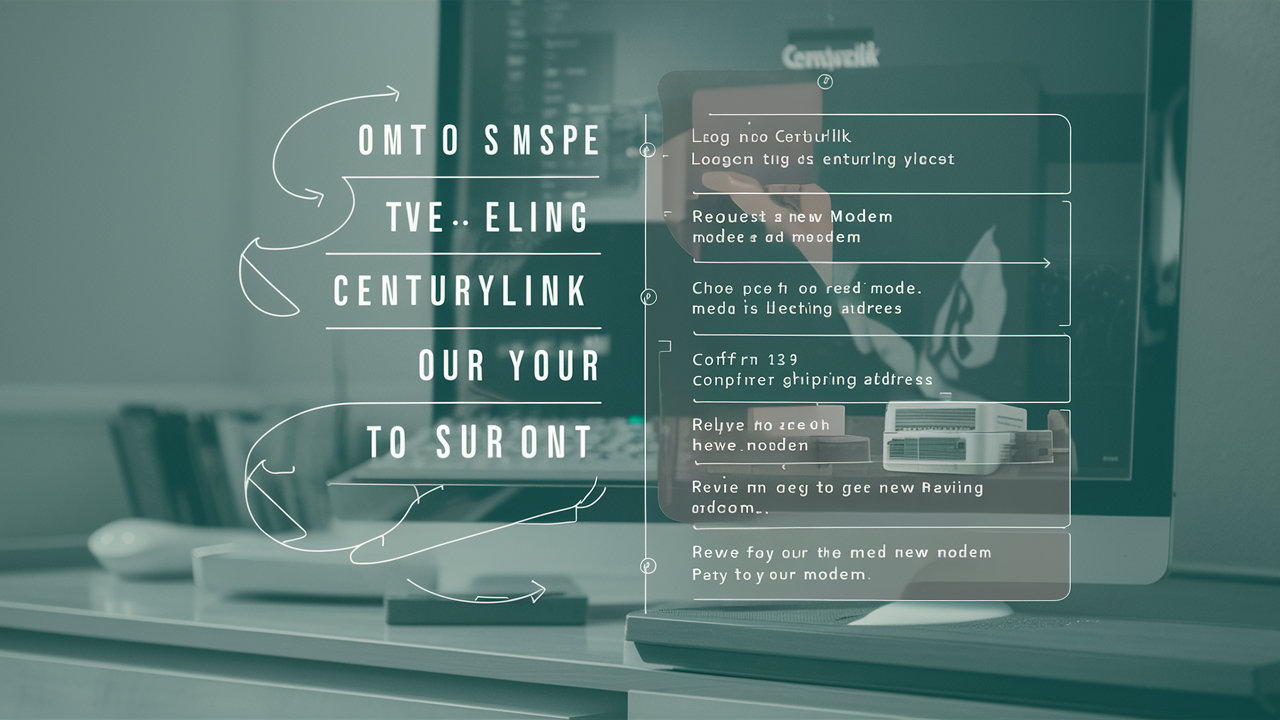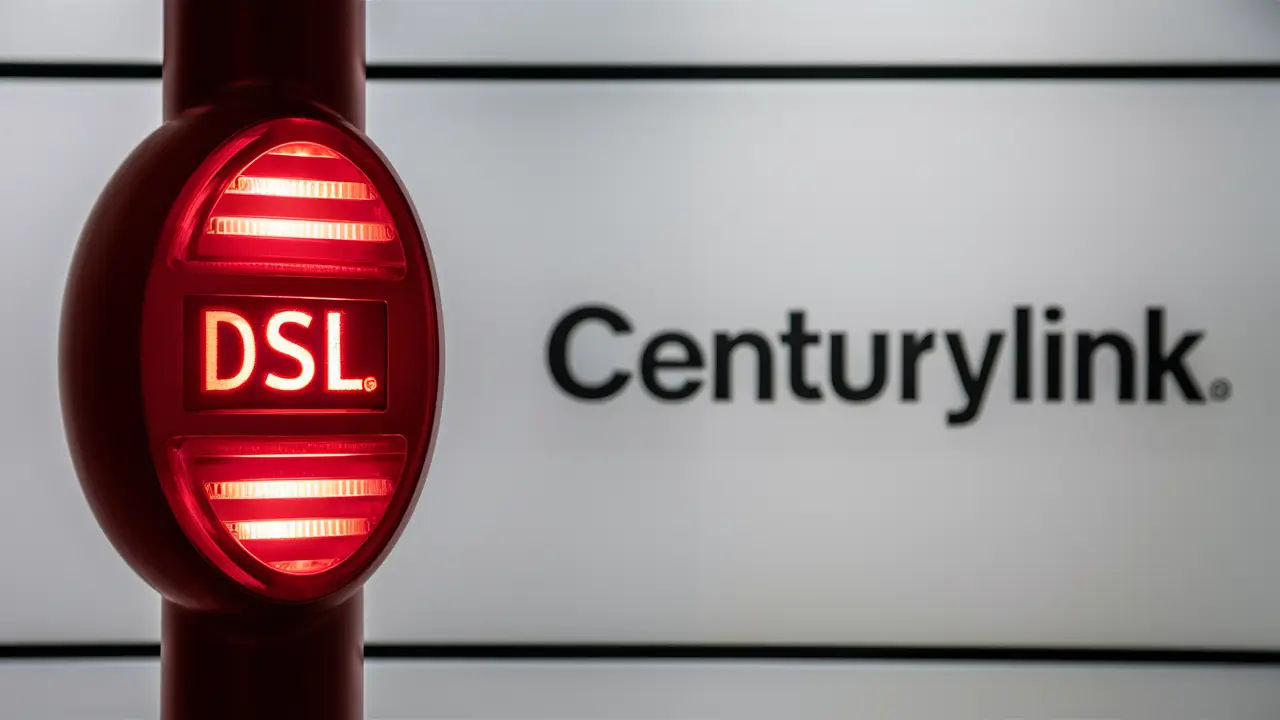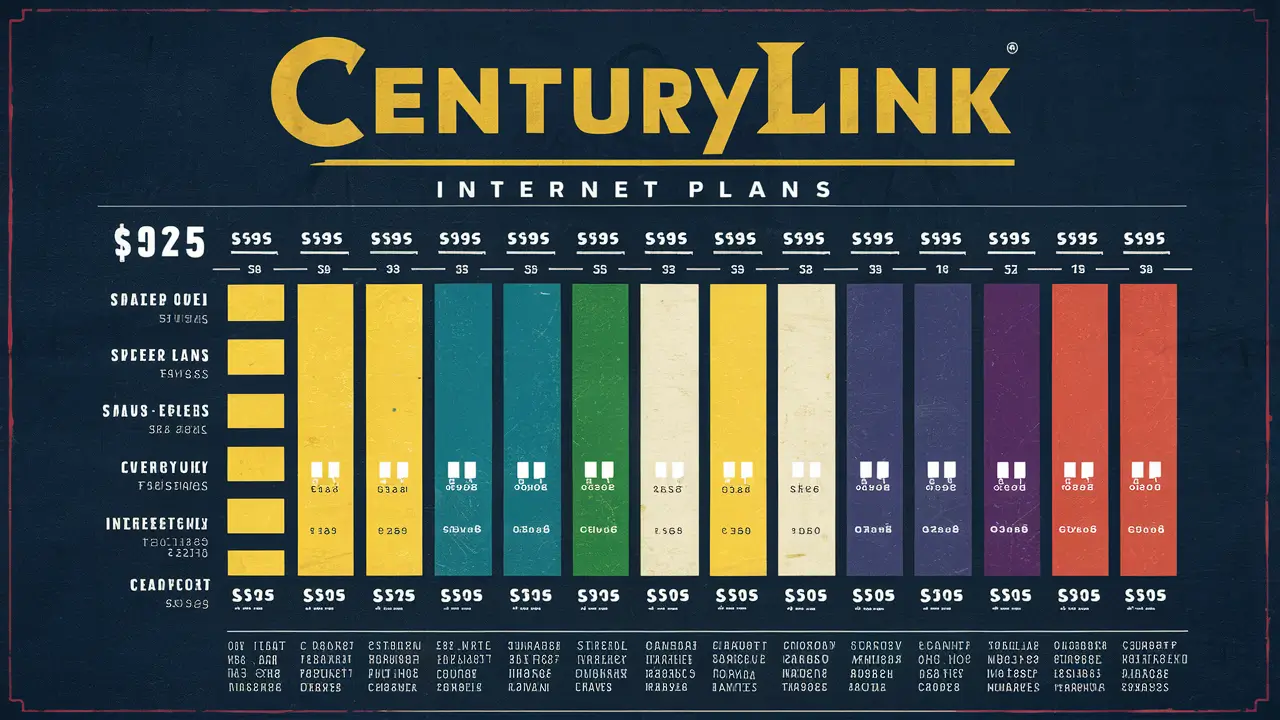CenturyLink home Internet Plans and Features

Discover the latest CenturyLink home internet plans and features for 2025. This comprehensive guide helps you navigate speeds, pricing, and unique benefits to find the perfect connection for your household's needs, ensuring you get the best value and performance.
Understanding CenturyLink Internet
CenturyLink, now operating as Quantum Fiber in many areas, is a prominent internet service provider (ISP) known for its diverse range of offerings, particularly its reliance on DSL technology and its expanding fiber optic network. For homeowners in 2025, understanding CenturyLink's approach to internet connectivity is crucial for making an informed decision. Unlike some competitors who solely focus on the latest fiber deployments, CenturyLink has historically leveraged its extensive DSL infrastructure, providing a viable option for many households where fiber might not yet be available. However, the company is actively investing in and rolling out Quantum Fiber, its next-generation fiber-optic service, which promises significantly higher speeds and more reliable performance.
The core of CenturyLink's service lies in its ability to cater to a broad spectrum of user needs and geographical locations. Whether you're in a densely populated urban center or a more remote rural area, there's a good chance CenturyLink offers some form of internet service. This accessibility is a significant advantage, especially when considering that high-speed internet is no longer a luxury but a necessity for remote work, online education, streaming entertainment, and staying connected with loved ones. In 2025, the demand for robust and consistent internet has only intensified, making the choice of ISP more critical than ever.
When evaluating CenturyLink, it's important to distinguish between their DSL and fiber offerings. DSL (Digital Subscriber Line) uses existing telephone lines to transmit data. While it has improved significantly over the years, its speeds are generally lower and more susceptible to distance from the central office compared to fiber. Fiber optic internet, on the other hand, uses strands of glass or plastic to transmit data as light pulses, offering unparalleled speeds, lower latency, and greater reliability. Quantum Fiber represents CenturyLink's commitment to the future, bringing gigabit speeds and symmetrical upload/download capabilities to more communities.
This guide will delve into the specifics of CenturyLink's home internet plans for 2025, exploring the features, benefits, and considerations that come with each. We'll break down what you can expect in terms of speed, pricing, and the overall user experience, helping you to cut through the jargon and select the service that best aligns with your digital lifestyle. Understanding the underlying technology and the provider's strategic direction is the first step towards securing a dependable internet connection.
Understanding DSL vs. Fiber
The fundamental difference between CenturyLink's DSL and Quantum Fiber services lies in their underlying technology and the resulting performance characteristics. For consumers in 2025, this distinction is paramount.
DSL Technology
DSL internet works by utilizing the copper telephone lines that are already present in most homes. It transmits data over these lines at frequencies different from those used for voice calls, allowing for simultaneous internet and phone service. The primary limitation of DSL is its dependence on the distance between your home and the local telephone company's central office (CO) or exchange. The farther you are from the CO, the weaker the signal becomes, leading to slower speeds and potential instability. While advancements like VDSL (Very High-Speed DSL) have boosted speeds, they still generally fall short of fiber optic capabilities. For many rural or underserved areas, DSL remains the most accessible high-speed internet option, and CenturyLink has a substantial footprint in this domain.
Fiber Optic Technology
Fiber optic internet, exemplified by Quantum Fiber, uses thin strands of glass or plastic to transmit data as pulses of light. This technology offers several distinct advantages:
- Higher Speeds: Fiber can support significantly higher download and upload speeds, often reaching gigabit (1,000 Mbps) or even multi-gigabit levels.
- Symmetrical Speeds: Unlike DSL or cable, fiber often provides symmetrical upload and download speeds, which is crucial for activities like video conferencing, uploading large files, and online gaming.
- Reliability: Fiber is less susceptible to electromagnetic interference, temperature fluctuations, and other environmental factors that can affect copper lines, leading to a more stable connection.
- Lower Latency: The speed of light transmission results in very low latency, which is the delay between sending a request and receiving a response. This is vital for real-time applications.
Quantum Fiber is CenturyLink's strategic initiative to upgrade its network and bring the benefits of fiber to more customers. Availability of Quantum Fiber is growing but is still geographically dependent.
CenturyLink Internet Plans for 2025
In 2025, CenturyLink (including its Quantum Fiber brand) offers a tiered approach to home internet, designed to meet varying bandwidth requirements and budgets. The specific plans available to you will depend heavily on your location, as fiber availability is still expanding. It's essential to check availability on the CenturyLink website for the most accurate and up-to-date plan information for your address. However, we can outline the general categories and typical features you can expect.
CenturyLink's strategy often involves offering a range of speeds, with their DSL plans typically providing more modest options and their Quantum Fiber plans pushing into the gigabit territory. This dual approach ensures that they can serve a wider customer base, from those who only need basic connectivity for email and browsing to power users requiring high-bandwidth solutions for demanding online activities.
DSL Internet Plans (Standard Availability)
For areas where fiber is not yet deployed, CenturyLink's DSL plans remain a primary offering. These plans are generally characterized by their affordability and availability, though speeds can vary significantly.
Typical DSL Speed Tiers
CenturyLink's DSL plans often come with advertised speeds that are "up to" a certain threshold. It's crucial to understand that actual speeds can be lower due to factors like distance from the DSLAM (Digital Subscriber Line Access Multiplexer) in the local exchange and the overall condition of the copper infrastructure.
- Basic/Standard Speed: Often advertised in the range of 10-25 Mbps download. This tier is suitable for single-user households or those with minimal internet needs, such as basic web browsing, email, and standard-definition streaming on one device.
- Faster DSL Speeds: Some areas may offer DSL plans with speeds up to 50 Mbps or even 100 Mbps. These are generally achieved through VDSL technology and can support multiple users and HD streaming on a few devices. However, upload speeds on DSL are typically much lower than download speeds, often in the single digits.
Key Considerations for DSL:
- Data Caps: While many CenturyLink DSL plans in 2025 are advertised as having no data caps, it's always wise to confirm this in the fine print, as policies can change.
- Pricing: DSL plans are often competitively priced, especially for the first 12 months, after which prices may increase.
- Performance: Expect variable performance, especially during peak usage hours, and significantly slower upload speeds.
Quantum Fiber Internet Plans (Expanding Availability)
Quantum Fiber represents CenturyLink's investment in the future, offering high-speed fiber optic internet. These plans are characterized by their superior performance, reliability, and symmetrical speeds.
Typical Quantum Fiber Speed Tiers
Quantum Fiber plans are designed to deliver the full potential of fiber optic technology.
- Gigabit Fiber: This is the flagship offering, typically providing speeds of up to 940 Mbps download and 940 Mbps upload. This is ideal for households with multiple users, heavy streaming (4K/8K), online gaming, frequent large file uploads/downloads, and demanding remote work setups.
- Multi-Gigabit Fiber (Emerging): As fiber infrastructure matures, CenturyLink may introduce plans offering even higher speeds, such as 2 Gbps or 5 Gbps, in select markets. These are for the most extreme bandwidth users.
Key Considerations for Quantum Fiber:
- Symmetrical Speeds: The most significant advantage is the equal download and upload speeds, dramatically improving the experience for video calls, cloud backups, and content creation.
- No Data Caps: Quantum Fiber plans consistently come with unlimited data.
- Consistent Performance: Fiber connections are generally more stable and less prone to slowdowns compared to DSL or cable.
- Availability: This is the primary limiting factor. Quantum Fiber is currently being rolled out and is not available in all areas that have CenturyLink DSL.
Plan Comparison Table (Illustrative for 2025)
The following table provides an illustrative comparison of typical CenturyLink and Quantum Fiber plans. Actual offerings and pricing will vary by location and are subject to change. Always verify with CenturyLink directly.
| Feature | CenturyLink DSL (Example) | Quantum Fiber (Example) |
|---|---|---|
| Technology | DSL | Fiber Optic |
| Download Speeds (Up to) | 10-100 Mbps | 940 Mbps |
| Upload Speeds (Up to) | 1-10 Mbps | 940 Mbps |
| Data Caps | Typically None (Verify) | Unlimited |
| Latency | Moderate to High | Very Low |
| Best For | Basic use, budget-conscious, areas without fiber | Heavy streaming, gaming, remote work, multiple users |
| Equipment Fee | May apply for modem/router rental | Often included or a small monthly fee |
| Contract | Often month-to-month, but promotional pricing may have term | Typically month-to-month |
Key Features and Benefits of CenturyLink Internet
Beyond the raw speed and technology, CenturyLink and Quantum Fiber offer several features and benefits that contribute to their appeal for home internet users in 2025. These elements can significantly impact the overall value and user experience.
No Data Caps (Generally)
One of the most significant advantages often associated with CenturyLink's internet services, particularly their Quantum Fiber offerings, is the absence of data caps. In an era where streaming 4K video, online gaming, and remote work can consume vast amounts of data, having unlimited bandwidth without the fear of overage charges is a major relief. While it's always prudent to double-check the terms of service for any specific plan, the general policy for Quantum Fiber is unlimited data, allowing users to browse, stream, and connect without restriction.
Competitive Pricing and Promotions
CenturyLink often employs competitive pricing strategies, especially for new customers. This can include promotional rates for the first 12 months, which can make their plans very attractive initially. However, it's crucial for consumers to be aware that these introductory prices typically increase after the promotional period ends. Understanding the long-term cost of a plan is as important as the initial savings. For DSL plans, this competitive pricing helps make internet accessible in areas where fewer options exist. Quantum Fiber, while often priced higher due to its superior technology, aims to provide value through its performance and unlimited data.
Reliability and Uptime
The reliability of an internet connection is paramount. For Quantum Fiber, the inherent nature of fiber optics provides a highly stable and consistent connection. Fiber is less prone to interference from external factors like weather or electrical signals compared to copper-based DSL or even coaxial cable. This translates to fewer dropped connections and a more dependable online experience. While DSL reliability can be more variable and dependent on line quality and distance, CenturyLink generally aims to provide a stable service within the limitations of the technology. Many users report good uptime with both services, but fiber's consistency is a notable upgrade.
Symmetrical Upload and Download Speeds (Quantum Fiber)
This is a game-changer for many users. While download speeds are what most people think of for streaming and browsing, upload speeds are critical for activities like video conferencing, uploading files to cloud storage, live streaming, and online gaming. Quantum Fiber plans typically offer symmetrical speeds, meaning your upload speed is as fast as your download speed (e.g., 940 Mbps download and 940 Mbps upload). This drastically improves the quality of video calls, makes uploading large projects much faster, and provides a smoother experience for interactive online activities. CenturyLink's DSL plans, conversely, have very limited upload speeds.
Equipment Options
CenturyLink typically offers modem and router rental options for a monthly fee. For DSL, this is often a combined modem/router unit. For Quantum Fiber, they may provide a high-performance router designed to handle gigabit speeds. Consumers also often have the option to purchase their own compatible equipment, which can sometimes lead to long-term savings by avoiding monthly rental fees. It's important to ensure that any self-purchased equipment meets the provider's specifications to guarantee compatibility and optimal performance.
Bundling Options (Limited)
While CenturyLink is primarily known for its internet services, in some areas, they may offer bundling options with phone services. However, they generally do not offer traditional TV bundles like some cable competitors. Their focus is largely on providing robust internet connectivity. For those seeking a TV package, it would typically need to be sourced separately, such as through a streaming service or a different provider.
Customer Service and Support
Customer support is a vital aspect of any ISP experience. CenturyLink provides various support channels, including online resources, phone support, and in some cases, technician visits for installation and troubleshooting. The quality of customer service can be subjective and vary by region, but having accessible support is a key benefit. For Quantum Fiber, the rollout often involves dedicated support teams to assist with the transition and setup.
Choosing the Right CenturyLink Plan for Your Needs
Selecting the ideal CenturyLink home internet plan in 2025 hinges on a thorough understanding of your household's internet usage habits, the number of connected devices, and your budget. With the distinction between DSL and Quantum Fiber being so significant, the first step is always to determine which technology is available at your address.
Step 1: Check Availability
This is the most critical step. Visit the official CenturyLink website (or Quantum Fiber website if you know it's available in your area) and enter your full address. The system will tell you which plans and speeds are actually offered at your location. If Quantum Fiber is available, it is almost always the superior choice due to its speed, reliability, and symmetrical upload/download capabilities. If only DSL is available, you'll need to assess which DSL speed tier best fits your needs.
Step 2: Assess Your Household's Internet Usage
Consider how many people will be using the internet simultaneously and what they will be doing online. Here’s a breakdown of common usage scenarios and recommended plan types:
Light Internet Users
- Activities: Email, social media, basic web browsing, occasional SD video streaming on one device.
- Number of Devices: 1-3 devices.
- Recommendation: A lower-tier CenturyLink DSL plan (e.g., 10-25 Mbps) might suffice. If Quantum Fiber is available, even the most basic fiber plan will offer a significantly better experience and future-proofing.
Moderate Internet Users
- Activities: HD streaming on multiple devices, video calls for work or school, online gaming, frequent social media use, downloading moderate-sized files.
- Number of Devices: 3-6 devices.
- Recommendation: A mid-tier CenturyLink DSL plan (e.g., 50-100 Mbps) could work, but performance might be strained during peak times. If Quantum Fiber is available, a Gigabit plan is ideal. Even a lower Quantum Fiber plan (if offered) would be a significant upgrade over DSL.
Heavy Internet Users / Power Users
- Activities: 4K/8K streaming on multiple devices, competitive online gaming, frequent large file uploads/downloads (e.g., video editing, cloud backups), multiple simultaneous video conferences, smart home devices, remote work requiring high bandwidth.
- Number of Devices: 6+ devices.
- Recommendation: For these users, DSL is generally not recommended. Quantum Fiber Gigabit or any multi-gigabit plan is essential. The symmetrical upload speeds are particularly crucial for productivity and content creation.
Step 3: Consider the Number of Connected Devices
In 2025, most households have numerous internet-connected devices beyond computers and smartphones. Think about smart TVs, gaming consoles, tablets, smart speakers, security cameras, thermostats, and other IoT devices. Each device consumes bandwidth. The more devices you have, the higher the speed you'll need to ensure a smooth experience for everyone.
Step 4: Evaluate Upload Speed Needs
If your online activities heavily involve sending data *out* – such as video conferencing for work, uploading large files to cloud storage (Google Drive, Dropbox, iCloud), live streaming on platforms like Twitch or YouTube, or frequent video calls with family – then upload speed is critical. This is where Quantum Fiber's symmetrical speeds shine. DSL's low upload speeds can make these activities frustratingly slow or even impossible.
Step 5: Understand Pricing and Contracts
- Promotional vs. Standard Pricing: Always ask about introductory offers and what the price will be after the promotion ends. Factor the long-term cost into your decision.
- Equipment Fees: Factor in any monthly rental fees for modems/routers or the upfront cost of purchasing your own equipment.
- Installation Fees: Some plans may have an installation fee, although this is often waived with promotions.
- Contracts: While many CenturyLink plans are month-to-month, be aware if any plan requires a contract, as early termination fees can apply.
Example Scenarios:
- Scenario 1: A family of four with moderate usage. Two adults working from home occasionally, two teenagers streaming videos and gaming. They need reliable HD streaming and decent video conferencing. If Quantum Fiber is available, a Gigabit plan is ideal. If only DSL is available, a plan offering 50-100 Mbps download would be the minimum, but they might experience some slowdowns during peak hours.
- Scenario 2: A single person on a budget needing basic connectivity. Primarily uses the internet for email, social media, and occasional Netflix viewing. If Quantum Fiber is available, even a lower-tier plan would offer excellent performance. If only DSL is available, a 10-25 Mbps plan might be sufficient and cost-effective.
- Scenario 3: A remote professional who uploads large video files daily. Needs high-speed, reliable internet with excellent upload performance. Quantum Fiber Gigabit is the only viable option. DSL would be completely inadequate.
By carefully considering these factors and checking your specific availability, you can make an informed choice about the CenturyLink home internet plan that best suits your needs in 2025.
Installation and Setup Process
Understanding the installation and setup process for CenturyLink home internet can help alleviate any concerns and ensure a smooth transition to your new service. The process can vary slightly depending on whether you are getting DSL or Quantum Fiber, and whether professional installation is required.
DSL Installation
For many CenturyLink DSL installations, a technician visit may not be necessary if the line is already active and in good condition. In such cases, CenturyLink will ship you a modem/router, and you can follow the provided instructions to set it up yourself.
- Equipment Shipment: You will receive a package containing your modem/router and setup instructions.
- Connection: Connect the modem to a power outlet and to the active phone jack in your home using the provided cable.
- Activation: Follow the instructions to activate your service, which may involve visiting a specific website or calling a number.
- Wi-Fi Setup: Configure your Wi-Fi network name (SSID) and password.
If a technician is required (e.g., for a new line installation or if troubleshooting is needed), they will schedule an appointment to visit your home, install or activate the necessary equipment, and ensure your DSL service is working correctly. This usually involves testing the line and configuring the modem.
Quantum Fiber Installation
Quantum Fiber installations typically require a professional technician visit due to the nature of fiber optic deployment. The process is designed to be efficient and minimally disruptive.
- Scheduling: After signing up, you will schedule an appointment for a Quantum Fiber technician to visit your home.
- On-Site Work: The technician will run a fiber optic cable from the street to your home. This might involve drilling a small hole into the exterior wall.
- Inside Installation: Inside your home, the technician will install an Optical Network Terminal (ONT), which is the device that converts the light signals from the fiber optic cable into data your devices can use. They will also connect your router to the ONT.
- Service Activation & Testing: The technician will activate your service, test the connection to ensure it's working at the contracted speeds, and help you set up your Wi-Fi network.
- Cleanup: The technician will clean up any mess made during the installation.
What to Expect During Installation:
- Timeframe: DSL self-installation can take as little as 30 minutes. Quantum Fiber professional installation typically takes 2-4 hours, depending on the complexity.
- Preparation: Ensure clear access to where the cable will enter your home and where you want the modem/ONT and router to be located.
- Equipment: CenturyLink usually provides the necessary modem/ONT and router.
Self-Installation vs. Professional Installation
Self-Installation (DSL):
- Pros: Faster, potentially cheaper (no installation fee), convenient if you're comfortable with basic tech setup.
- Cons: May not be an option if line issues exist, requires user to troubleshoot if problems arise.
Professional Installation (Quantum Fiber, sometimes DSL):
- Pros: Ensures proper setup, technician can diagnose and fix line issues, ideal for complex setups or if you prefer expert assistance.
- Cons: Requires scheduling an appointment, may involve an installation fee (though often waived).
CenturyLink's website provides detailed guides and support resources for both self-installation and information about scheduling professional appointments. It's always recommended to have your account information and any relevant contact numbers readily available during the setup process.
Customer Service and Support
When choosing an internet service provider, reliable customer service and accessible support are crucial components of the overall experience. CenturyLink offers a range of channels to assist customers with inquiries, technical issues, and account management in 2025.
Support Channels
- Online Support Center: CenturyLink's website features an extensive online support portal with FAQs, troubleshooting guides, setup tutorials, and articles covering common issues for both DSL and Quantum Fiber services. This is often the first place to look for quick answers.
- Phone Support: Dedicated customer service and technical support lines are available for assistance. These are typically available during business hours, and sometimes 24/7 for urgent technical issues. Be prepared to provide your account information and a detailed description of your problem.
- Chat Support: Many ISPs offer live chat options on their websites, allowing for real-time text-based assistance without needing to make a phone call. This can be convenient for less complex issues.
- Technician Visits: For issues that cannot be resolved remotely, CenturyLink can dispatch a technician to your home to diagnose and fix problems with your service or equipment.
Common Support Inquiries
Customers typically contact support for the following reasons:
- Billing Questions: Inquiries about charges, payment options, or understanding your bill.
- Technical Troubleshooting: Issues with internet connectivity, slow speeds, Wi-Fi problems, or equipment malfunctions.
- Account Management: Changing plans, updating personal information, or inquiring about service upgrades.
- Installation Support: Assistance with self-installation or scheduling/following up on technician appointments.
Tips for Effective Support Interaction
- Be Prepared: Have your account number, the best contact number, and a clear description of the problem ready before you call or chat.
- Note Details: Keep a record of who you spoke with, the date and time of your interaction, and any ticket or reference numbers provided.
- Be Specific: Clearly explain the issue, including any error messages you see, when it started, and what steps you've already taken.
- Understand Your Plan: Be aware of your current internet plan's speeds and features, as this information is helpful for troubleshooting.
- Patience: Technical issues can sometimes be complex. Patience and clear communication are key to reaching a resolution.
While customer service experiences can vary, CenturyLink aims to provide comprehensive support to ensure customers can enjoy their internet service with minimal disruption. For Quantum Fiber customers, the support experience is often integrated with the specific needs of a fiber optic network.
Alternatives and Comparisons
When considering CenturyLink home internet plans and features for 2025, it's beneficial to compare their offerings against other major internet service providers (ISPs). The competitive landscape is diverse, with options ranging from cable and fiber to satellite and fixed wireless. Understanding how CenturyLink stacks up can help solidify your decision.
Comparison with Major ISPs
Cable Internet Providers (e.g., Xfinity, Spectrum)
- Technology: Primarily uses coaxial cable lines.
- Speeds: Offers a wide range of speeds, often comparable to or exceeding CenturyLink's DSL, and can reach gigabit speeds in many areas.
- Data Caps: Many cable providers have data caps, though unlimited data add-ons are usually available.
- Bundling: Typically offer robust bundles including TV, phone, and internet.
- Reliability: Generally reliable, but can experience slowdowns during peak usage times in densely populated areas.
- CenturyLink vs. Cable: Quantum Fiber is directly competitive with cable's top speeds and offers unlimited data. CenturyLink's DSL is generally slower and less consistent than cable's mid-tier offerings. Cable providers often have more comprehensive bundle options.
Other Fiber Optic Providers (e.g., AT&T Fiber, Verizon Fios, Google Fiber)
- Technology: Pure fiber optic networks.
- Speeds: Offer very high symmetrical speeds, often matching or exceeding Quantum Fiber's gigabit offerings.
- Data Caps: Typically unlimited data.
- Bundling: Varies; some offer bundles, others focus on internet-only.
- Reliability: Excellent, with low latency and high stability.
- CenturyLink vs. Other Fiber: Quantum Fiber competes directly with these providers in terms of technology and performance. The primary differentiator is availability. If multiple fiber providers are available in your area, comparing specific pricing, speeds, and any unique features (like Wi-Fi equipment or included services) is key.
Satellite Internet Providers (e.g., Viasat, HughesNet)
- Technology: Uses satellites to transmit data.
- Speeds: Generally much slower than DSL, cable, or fiber, and often have high latency.
- Data Caps: Almost always have strict data caps and throttling policies.
- Availability: Available in most rural and remote areas where other options are scarce.
- CenturyLink vs. Satellite: CenturyLink's DSL is typically a significant upgrade over satellite internet in terms of speed and latency, even in rural areas where DSL is available. Satellite is a last resort for connectivity.
Fixed Wireless Providers
- Technology: Uses radio waves to transmit internet from a local tower to a receiver at your home.
- Speeds: Varies widely, can sometimes compete with DSL speeds.
- Data Caps: Often have data caps.
- Availability: Primarily in rural and suburban areas.
- CenturyLink vs. Fixed Wireless: Depending on the provider and your location, fixed wireless can be comparable to or better than CenturyLink's DSL. However, Quantum Fiber is a superior option if available.
Key Differentiators for CenturyLink
- Broad Availability of DSL: CenturyLink's extensive DSL network ensures internet access for many customers in areas where fiber is not yet deployed.
- Quantum Fiber Expansion: Their commitment to rolling out Quantum Fiber positions them as a strong competitor in the high-speed internet market.
- No Data Caps on Fiber: This is a significant advantage for heavy internet users.
- Potentially Lower Initial Cost for DSL: DSL plans can be more budget-friendly for basic needs.
When making your final decision, it's crucial to:
- Verify Availability: Always check what services are actually offered at your specific address.
- Compare Speeds and Features: Look at both download and upload speeds, data policies, and any included equipment or services.
- Consider Long-Term Costs: Factor in pricing after promotional periods and any equipment rental fees.
- Read Reviews: Look for local reviews regarding reliability and customer service for each provider in your area.
By performing this comparative analysis, you can confidently choose the internet plan that best meets your household's demands and budget for 2025.
The Future of CenturyLink Internet
The landscape of home internet is constantly evolving, driven by technological advancements and increasing consumer demand for faster, more reliable connections. CenturyLink, particularly through its Quantum Fiber initiative, is positioning itself to meet these future demands. The company's strategic direction indicates a clear focus on expanding its fiber optic footprint and enhancing the overall customer experience.
Expansion of Quantum Fiber Network
The most significant aspect of CenturyLink's future is the continued rollout of its Quantum Fiber network. As of 2025, this expansion is ongoing, aiming to bring gigabit-speed internet to more urban, suburban, and even some rural communities. This commitment to fiber infrastructure is crucial, as fiber is the backbone of next-generation internet services, capable of supporting speeds far beyond what traditional DSL or even cable can offer. The company's investment in fiber suggests a long-term strategy to transition its customer base towards these superior technologies.
Technological Advancements
Beyond the physical infrastructure, CenturyLink is likely to explore and implement further technological advancements. This could include:
- Higher Speed Tiers: As fiber technology matures, expect to see the introduction of multi-gigabit plans (e.g., 2 Gbps, 5 Gbps, 10 Gbps) becoming more common, catering to the most demanding users.
- Enhanced Wi-Fi Solutions: With increased speeds, there will be a greater need for advanced Wi-Fi routers and mesh systems to ensure seamless connectivity throughout the home. CenturyLink may offer more sophisticated equipment options or partnerships.
- Network Optimization: Continuous improvements in network management and optimization will be key to maintaining high performance and reliability, especially as more devices connect to the internet.
Focus on Customer Experience
In a competitive market, customer experience is a critical differentiator. CenturyLink is expected to continue focusing on improving its customer service, streamlining the installation process, and providing user-friendly tools for managing accounts and troubleshooting issues. For Quantum Fiber, this often means a more hands-on approach to installation and onboarding, ensuring customers can fully leverage the capabilities of their new service.
Adapting to Market Trends
The future of internet services will be shaped by several key trends:
- Increased Bandwidth Demand: The rise of 8K streaming, virtual reality (VR), augmented reality (AR), and increasingly sophisticated smart home ecosystems will continue to drive the need for higher bandwidth.
- Remote Work and Education: The sustained prevalence of remote work and online learning necessitates robust, reliable internet connections with strong upload speeds.
- 5G Integration: While distinct from fixed-line internet, the expansion of 5G mobile networks might influence how ISPs offer services, potentially leading to hybrid solutions or increased competition in some areas.
CenturyLink's strategy, with its emphasis on fiber expansion, appears well-aligned to meet these future demands. By investing in Quantum Fiber, they are not just upgrading their current offerings but are building a foundation for the internet services of tomorrow. Consumers looking for future-proof connectivity should prioritize fiber options, and CenturyLink's growing Quantum Fiber network is a significant player in this transition.
In conclusion, CenturyLink offers a diverse range of home internet plans in 2025, catering to various needs and budgets through its established DSL network and its rapidly expanding Quantum Fiber service. Whether you require basic connectivity or high-speed, symmetrical bandwidth for demanding applications, understanding your specific availability and usage patterns is key to selecting the right plan. Quantum Fiber stands out for its superior speed, reliability, and unlimited data, making it the premier choice for those fortunate enough to have it in their area. For areas still relying on DSL, CenturyLink provides an accessible option, though with inherent limitations. By carefully evaluating speeds, features, pricing, and considering your household's digital lifestyle, you can confidently choose a CenturyLink internet plan that keeps you connected efficiently and effectively in 2025 and beyond.

